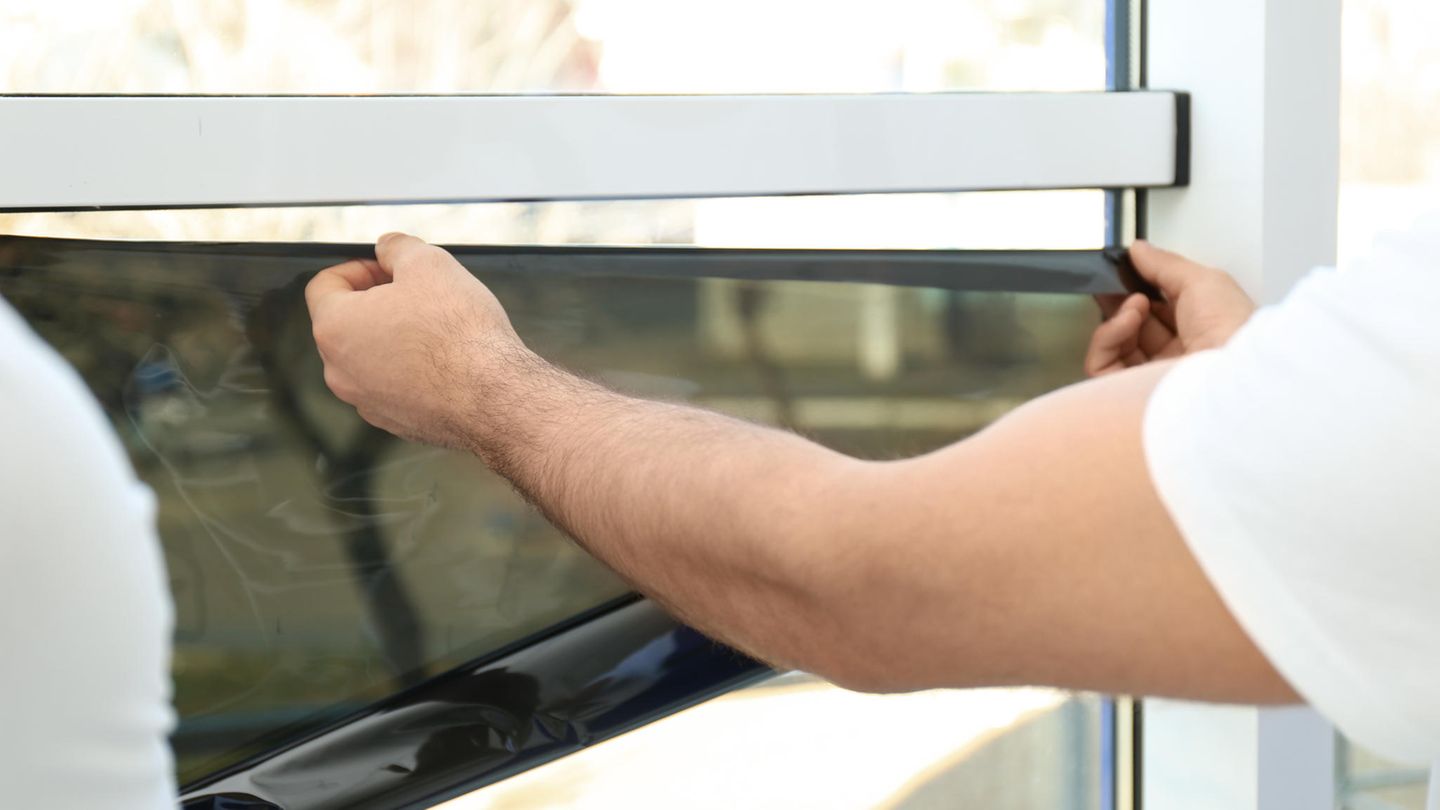Shadow dispenser
How you can lower the room temperature with a sun protection film
Copy the current link
Add to the memorial list
We all suffer from a heat wave, but above all those who live in an attic apartment. If it will be so warm again in 2025, preventive measures could cause cooling.
If the sun shines on its windows for hours in summer, it heats up the living rooms – if there are no air conditioners – unhindered. The sun rays act like a kind of fan heating that creates warm air. The problem with this is that the overheated rooms hardly cool down overnight, so that sleep is negatively affected. And working during the day when they work in the home office. In order to lower the room temperature, attaching a sun protection film can be useful. This article explains what advantages and disadvantages the purchase brings with it.
The advantages and disadvantages of sun protection film
A mirror Consists of several layers that ensure that a large part of the sun’s rays are reflected – that is, fewer warmth gets inside. The darker a film, the greater the heat protection. Conversely, this also means that less light can penetrate through the windows. In addition, if the sun protection film is not removed in the cold autumn and winter months, the rooms must be heated more from the inside. So before you choose a sun protection film, you should weigh the advantages and disadvantages well against each other. The following table lists the most important (criticism) points again:
| Advantages | Disadvantages |
|
|
|
|
|
|
|
|
Inside or outside? How to put on the film
Depending on the window type and glazing type, you should Either attach the outside or inside – the windows are simply simply glazed, even from both sides. The attachment on the inside of safety glass or roof windows has the advantage that the film is not exposed to any weather and is therefore more durable. Nevertheless, it is recommended for multiple -glazed windows to attach the sun protection film on the outside (if suitable). This reflects the sun in front of the glass so that it does not heat up and does not release any heat to the interiors. Before you get fresh, however, you need further work material, such as a window cleaner and water, washing -up kit and a spray bottle, a measuring tape or ruler, some adhesive tape and a cutter, a as well as a clean and lint -free fabric cloth.
In the following video, you are now explained step by step how you can attach a sun protection film to the window independently.
At this point our editorial team has integrated the content of YouTube.
Due to their data protection settings, this content was not invited to protect their privacy.
Sun protection film in the test: This is what the experts say
Stiftung Warentest has also devoted itself to the question of how well sun protection films really work in practice. A total of eleven different models of different manufacturers were tested. It came out that most foils have completed “good” or “satisfactory”. The biggest differences were in terms of handling and weather resistance. But what is much more important: strongly reflective sun protection films actually only left through thirteen to 20 percent of the sun rays. Nevertheless, Warentest also sees a disadvantage in the fact that the rooms could appear darker and the heating costs could be higher in winter – and comes to the following conclusion: “Dark sun protection films are particularly suitable for heavily overheated rooms in the attic.”
In addition, the consumer organization is convinced that the strong reflection of a sun protection film on sloping ceilings would not disturb any surrounding neighbors. Therefore, the general recommendation according to the test series is: “For living rooms with vertical windows, less strongly reflective foils are better choice. They do not reflect so strongly and less less. Nevertheless, they held 55 to 60 percent of the solar energy. This reduces the overheating lessons in the room by more than a third.
Source:
*This article contains so-called affiliate links to products in online shops. If a user clicks on it and buys something, the publisher receives a commission from the dealer, not from the manufacturer. Of course, where and when you buy a product is up to you.
Source: Stern




